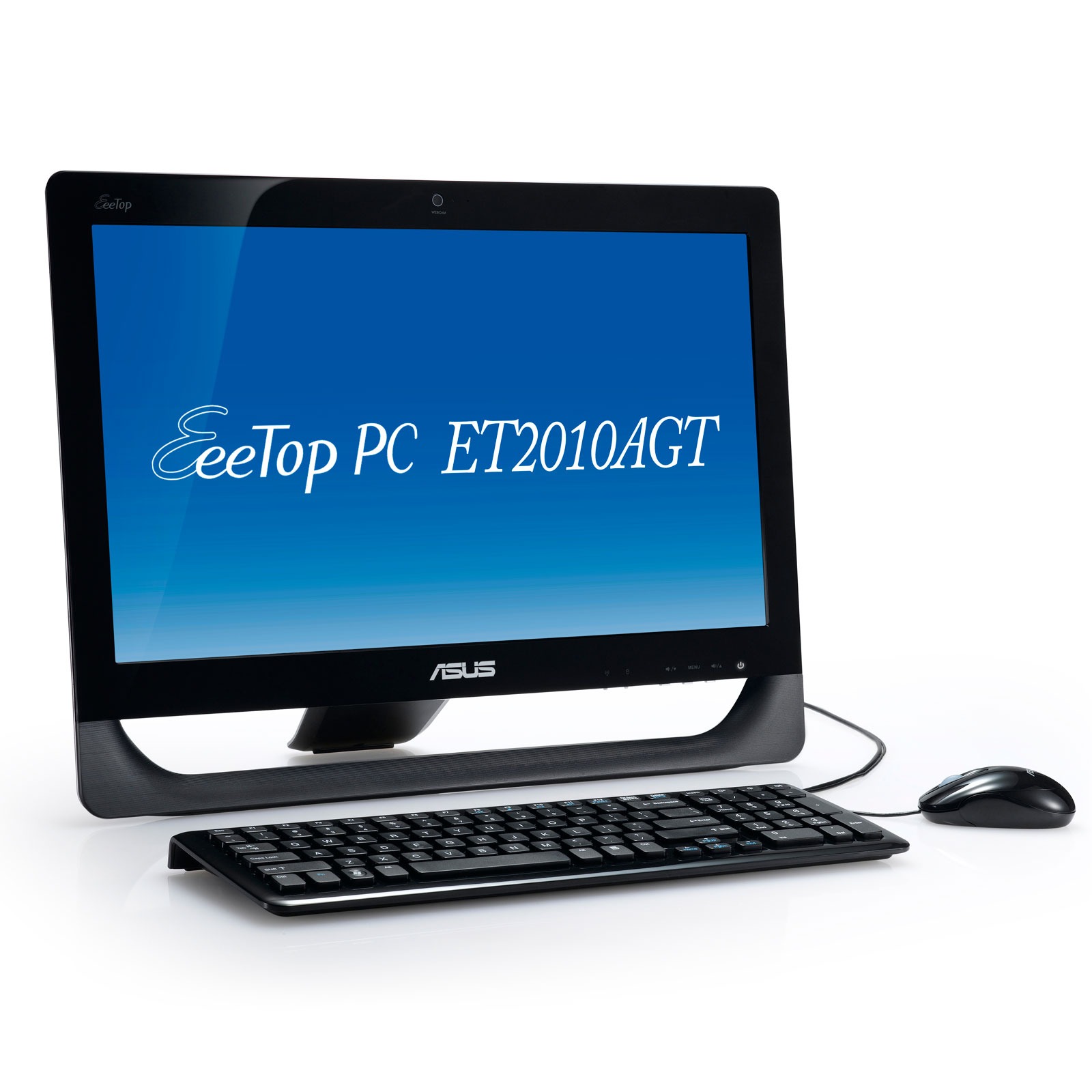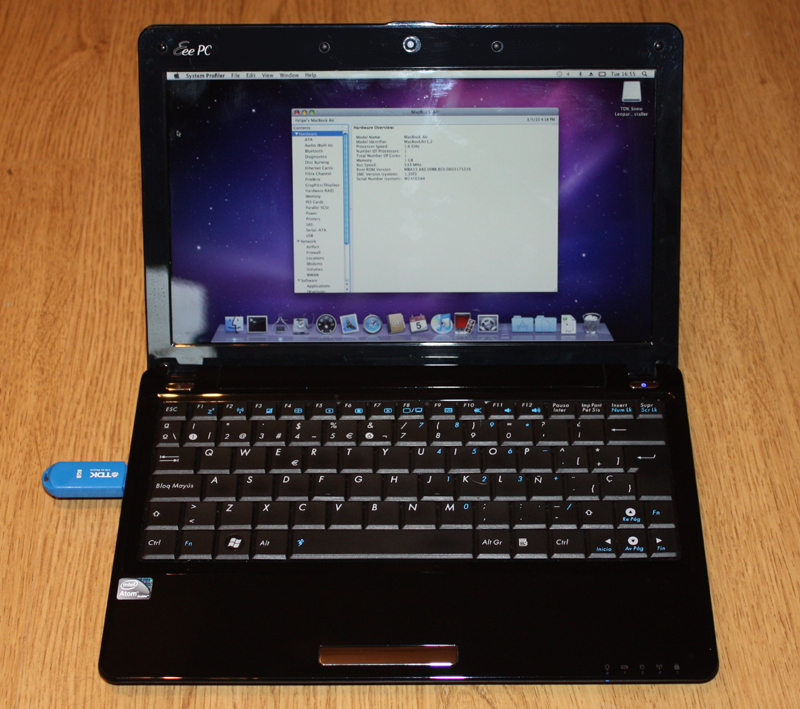- Mac Os For Asus Eee Chromebook
- Mac Os For Asus Eee Laptop
- Mac Os For Asus Eee Core I3
- Mac Os For Asus Eee Core I5
Explore the world of Mac. Check out MacBook Pro, iMac Pro, MacBook Air, iMac, and more. Visit the Apple site to learn, buy, and get support. The Asus Eee PC is a netbook computer line from Asus, and a part of the Asus Eee product family. At the time of its introduction in late 2007, it was noted for its combination of a lightweight, Linux-based operating system, solid-state drive (SSD), and relatively low cost. Newer models added the options of Microsoft Windows operating system and rotating media hard disk drives (HDD),. How you can identify MAC address and check MAC adress? Windows(XP,7,Vista,8): In the command prompt (CMD), type in getmac (or getmac /v /fo list for full info). Linux/Unix: type ifconfig -a. You must be root user or have appropriate permissions. Mac OS X: launch the Terminal and type ifconfig. Cisco: in the CLI type e.g.
First, a quick explanation about this install method. (You can skip forward to the next section if you want.)- How-To Install or Update Mac OS X Snow Leopard 10.6.7 on the Asus Eee PC 1005HA Netbook Upgrade to Mac OS X Snow Leopard 10.6.6. Copy MacOSXUpdCombo10.6.6.dmg in the USB stick. Uncompress legacykernel-MacOSX10.6.6.tgz and to legacykernel-MacOSX10.6.6.pkg and copy it on the USB stick.
- This Eee-Pc is different from the once i had.I remember the first was a 900 series and then i had the 10 inch with 20 gb HD, but this one has a dualcore pr.
I have tried many install methods. This is my favorite. I would like to thank everyone in the Hackintosh scene. I will try to thank the individuals who developed the kexts in this package, as I remember where I found them.

The method described below is a 'non-DSDT, hacked-kernel, null-powermanagement' method based on myHack installer v1.1. Basically, this method is based on Kexts. Being Kext-based, allows for updates. These can be shared on my blog for everyone to update with. Because it is not based on DSDT, you can change your hardware. You may upgrade your RAM, Battery, Hard-Drive, WIFI card, etc. If you want to make your own DSDT, that would be also be good. You should avoid using a DSDT created on someone else's computer. There can be subtle differences that can cause problems. It isn't that difficult to learn to make a DSDT file. If not, you can have a fully functioning hackintosh, using my kit, without DSDT.
The hacked kernel allows for upgrading beyond the Atom's end-of-support since 10.6.2. To update the OS, you would need to replace the mach-kernel after the upgrade. (Also, you need to update sleepenabler).
Mac Os For Asus Eee Chromebook
What you will need:
• Access to any Mac computer, or a Hackintosh.
Mac Os For Asus Eee Laptop
• 8GB or larger USB thumb-drive, or an 8GB or larger SD card, or an external USB Hard-Drive.• Asus Eee PC 1005HA or 1005HAB.
• Retail Snow Leopard 10.6 Installer DVD (the $29 one) NOTE: This must be a 10.6.0 MacOSX Installer Disk (retail). Any newer Installer DVDs will not work with MyHack. I am looking into solutions, which will probably involve using a different program than MyHack.
• Mac OS 10.6.6 Combo Updater (downloaded from the support tab at Apple.com). Store it on another (perhaps 2GB) SD card, or a USB Hard-drive.
• USB Mouse
• Jaavros-Kit 1005HA: download from here: [note: this kit is old. There is a new kit here]

 To make a USB Thumb-Drive that installs Snow Leopard:
To make a USB Thumb-Drive that installs Snow Leopard: You can do this on any real Mac computer, or any Hackintosh. Basically, you will be Restoring the 'Snow Leopard Install DVD 10.6.0' to the Thumb-Drive. Then using the application 'myHack' to finish the install. (myHack installs the Bootloader and needed kexts.)
Step 1. Use Disk Utility to 'Restore' from the Snow Leopard 10.6.0 Installer DVD to the USB Thumb-Drive. (enable 'Erase Destination')
Screen-shots are here.

3. Copy 'Jaavros-Kit 1005HA' to your Thumb-Drive. You will need it later.
Your Thumb-drive is ready to install Snow Leopard on your EeePC!!!
Now you are ready to install Snow Leopard. Plug in the USB Mouse and the Thumb-Drive. Hit F10 (to save changes to the Bios and reboot).
1. Press 'ESC' when the computer boots. Select the USB Thumb-drive from the list.
2. At first window, select the disk icon for the Mac OSX Installer. Hit return.
3. You still need to use the Thumb-Drive to boot off your Hard-Drive. Because it is still a clean install (vanilla).
Restart into the Thumb-Drive, as you did earlier. This time you will select the icon for your new Snow Leopard OS and hit Enter. Your computer should boot into Snow Leopard.
4. The next thing to do is update to OS 10.6.6. Copy the Mac OS 10.6.6 Combo Updater to your desktop, and run it. After it is done, DO NOT RESTART. Instead, minimize the updater to the dock (by clicking the yellow (-) button).
- Next, you will use myHack to install the Bootloader and Kexts to your Hard-Drive, and then you will replace the Kernel and Kexts with the ones from my kit 'Jaavros-Kit 1005HA'.
5. Open myHack. Do a 'STANDARD INSTALL' to your new Snow Leopard OS. (DO NOT RESTART).
Mac Os For Asus Eee Core I3
6. You will need to show 'invisible' files for the next step. The application 'ShowAllFiles' in Jaavros-Kit will do this.You can also use terminal commands to show/hide invisible files.
7. Replace the file 'mach_kernel' on the root of your hard-drive with the one from Jaavros-Kit. After that, you can hide invisible files.
8. Replace the folder 'Extra' on the root of your hard-drive with 'Extra' from Jaavros-Kit. (You may have to delete the previous folder first.)
9. Move files in Jaavros-Kit to /System/Library/Extensions, replacing the ones that are already there.
10. Finally, you need to fix the 'permissions and extensions-cache'. There is a program called Pfix in the Terminal for that. (The Terminal application is located in /Applications/Utilities/.)
Open a Terminal window. Type 'pfix' then hit Enter. Type your password when asked (it seems like nothing happens when you type, that is normal).
You no longer need the Thumb-Drive to boot. You should have a fully functional Hackintosh. DO NOT update the operating system to 10.6.7. I will post a hacked-kernel. However, you should use Software-Update to update everything else.
Enjoy.
Troubleshooting:
• 'Hibernation Image Too Old'
Problem: A message during boot about 'Hibernation Image being Too Old'.
Solution:
Open a Terminal window.
sudo pmset hibernatemode 0
sudo rm /var/vm/sleepimage
Reboot
The above graph is known as the Technology Adoption Lifecycle and is an approximation as to how new types of products and technologies are adopted. I’m usually in the left-hand 2.5% for most technology-related things (well, I’ve got to be honest!) This post is about Netbooks, small form-factor devices used primarily to access the internet and run lightweight applications. Since 2007 I’ve had three netbooks: an Asus Eee 701 (with stock Xandros Linux), an Advent 4211 (MSI Wind clone upon which I installed Mac OSX with some success), and an Asus Eee 1000 (running Ubuntu Netbook Remix). The latter was a fantastic netbook and I was disappointed when I had to return it to my previous school upon leaving.
Since then, I’ve been on the lookout for a (very) cheap netbook with which I can mess about. If you’re thinking of purchasing one of these then I’d recommend first having a look at the excellent comparison of netbooks on Wikipedia. The problem with having a £1500 Macbook Pro is that it makes you rather reluctant to take it to places like the beach (now only 1.5 miles away from where I live!) In addition, my line manager at my new job as well as my father have been asking for advice regarding netbooks. As a result, I thought that now would be a good time to look at the best operating system to run on a netbook.
Why Linux?
You may be wondering why I don’t automatically recommend Windows 7 for netbooks. That’s because I’m a great advocate of Open Source Software. In the past, it was difficult to hand-on-heart recommend Linux (an Open Source Operating System) for the average person. I’ve used Linux since Red Hat Linux in 1997 and it hasn’t been until the dawn of Ubuntu Linux around 5 years ago that I’ve been able to recommend it to, for example, my parents (who have run it on their laptop for the past 3 years).
Linux is more flexible and configurable than Windows. Oh, and it’s free. 🙂
What to look for in a netbook operating system
To my mind, a netbook operating system should be:
- Quick to boot-up (from cold, hibernation and suspend alike)
- Work with no glitches (i.e. support hardware out-of-the-box)
- Intuitive
- Aesthetically pleasing
- Easily configurable
The contenders…
Below you’ll find quick video demonstrations of the following operating systems that can be installed on netbooks:
- Easy Peasy (Ubuntu Netbook Remix for Eee PCs)
Why have I chosen the three above? There’s no sound, scientific reason apart from that a) 3 is a good number of options to give to people, b) I’ve used Ubuntu Netbook Remix before and have an interest in test-driving the other two, and c) Jolicloud, the other OS I wanted to test, won’t play nicely with virtual machines.
Oh, that’s the other thing. This is completely unscientific as these videos demonstrate how these operating systems perform within a virtual machine within my Macbook Pro. Your mileage may, and probably will, vary. The videos are simply there to give you a taster… :-p
Easy Peasy (Ubuntu Netbook Remix)
[youtube=http://www.youtube.com/watch?v=r4wOsTSE3Gk&w=425&h=344]
gOS
Mac Os For Asus Eee Core I5
[youtube=http://www.youtube.com/watch?v=Nw4rFuclzZY&w=425&h=344]
Linux Mint

[youtube=http://www.youtube.com/watch?v=5LSfs_BhwjM&w=425&h=344]
Conclusion
So… which is best? I’d love to be able to say gOS (or Jolicloud if I could get it to work). I love the idea of the netbook being a device simply to connect you to cloud-based working. However, practicality is the order of the day. You have to be able to work effectively offline. Whilst all OS’s will allow you to do this, Ubuntu Netbook Remix allows you to do this in a straightforward and streamlined way.
Ubuntu Netbook Remix – via Easy Peasy if you have an Asus Eee – is the winner! 😀
Related Posts:
